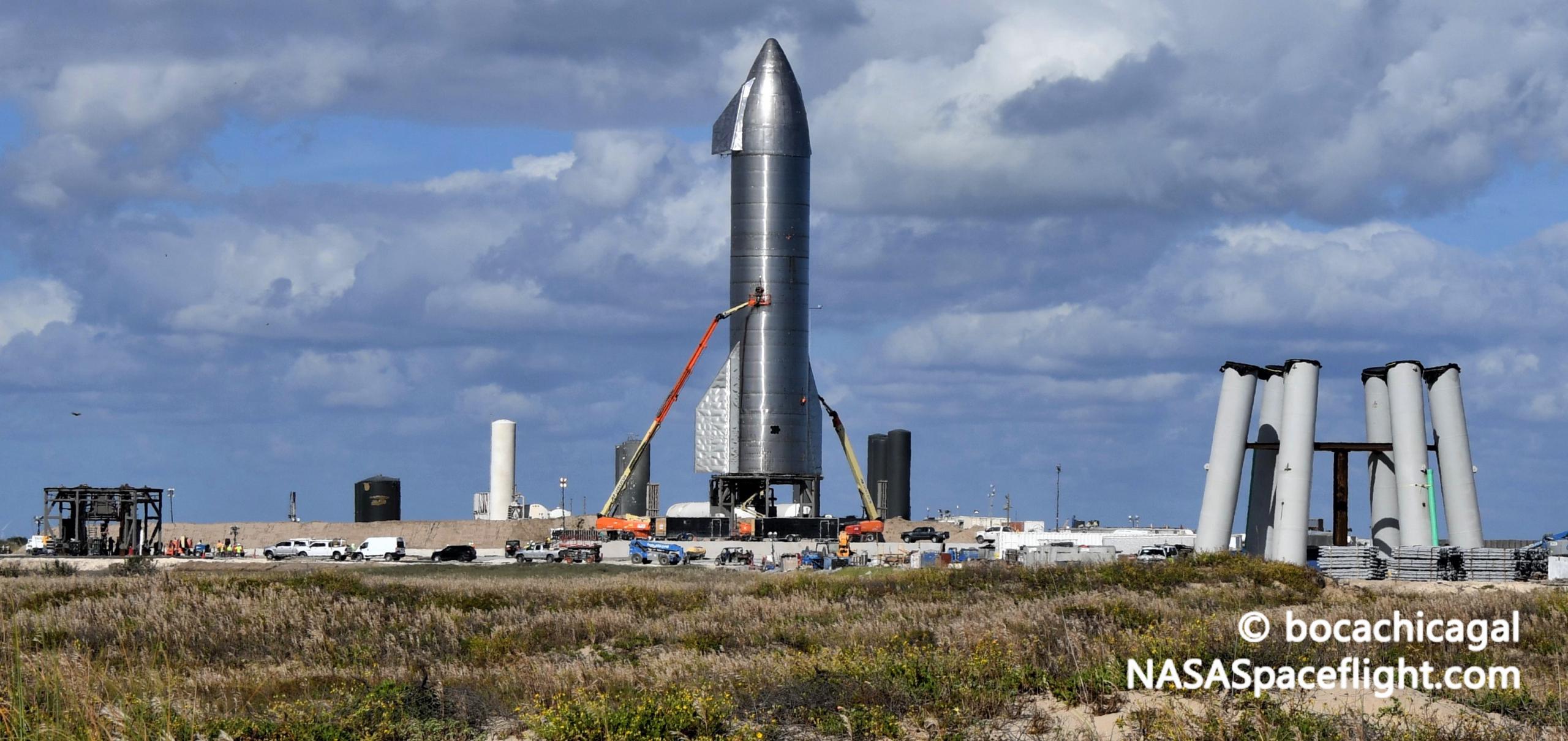
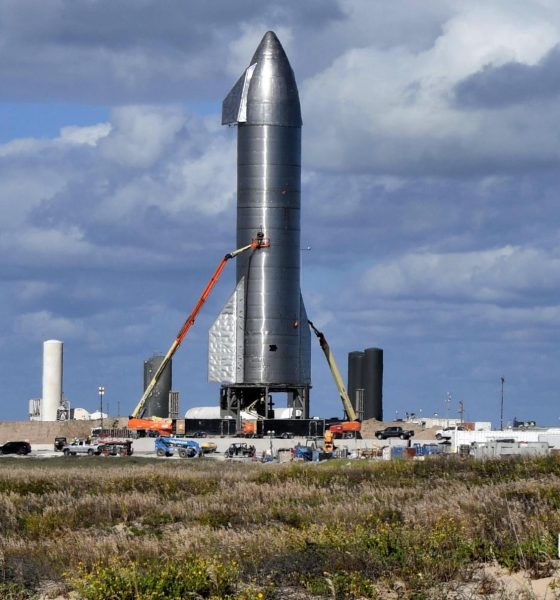
News
SpaceX sets dates for Starship static fire, high-altitude launch debut
CEO Elon Musk says that SpaceX is set to attempt one final Raptor engine static fire test before putting Starship through its high-altitude launch debut later this week.
Liable to begin as soon as November 30th per public road closure notices, Musk says that Starship serial number 8’s (SN8) launch debut – both Starship’s first fully-assembled flight test and first high-altitude launch attempt – is now scheduled no earlier than (NET) 8 am to 5 pm CST (UTC-6) on Wednesday, December 2nd.
November 30th will instead host what is believed to be a unique kind of static fire test for Starship SN8, hopefully proving that the rocket has a decent shot at surviving its risky launch debut.
As previously discussed on Teslarati, SpaceX’s Starship development strategy means that SN8’s survival is far less important than it may seem.
“On November 25th, Starship SN9 (featuring “small improvements”) was stacked to its full 50-meter (~165 ft) height. If SN8 is destroyed during testing, SN9 will likely be ready to roll to the launch site almost as soon as the dust settles.
Meanwhile, Starship SN10 is likely just 7-10 days away from a similar nosecone stacking milestone, and Starship SN11’s tank section is just one stack away from completion, likely putting it less than two weeks behind SN10. In other words, insofar as speed is a priority and each prototype is anywhere close to as cheap as Starship’s majority-steel bill of materials might suggest, SpaceX is building Starships so quickly that it almost doesn’t make sense to spend more than a few weeks working through bugs on any single suborbital ship.”
Teslarati.com — November 25th, 2020
In fact, delaying SN8’s launch to try to refine the rocket in situ and better ensure success could actually be to the detriment of successive prototypes and the Starship program in general. If, for example, a fundamental design flaw is revealed in Starship SN8 only after the prototype’s first test flight, SpaceX could be forced to scrap a huge amount of work done on as many as six, seven, eight, or even more subsequent prototypes. In that since, while it may seem like caution maximizes the value any single Starship prototype can provide SpaceX, that’s only true as long as the Starship design is mature enough that new fundamental flaws are unlikely to arise.
Given how young SpaceX’s agile Starship development program is, it would make very little sense to hinge months of work and more than half a dozen rocket prototypes on the quality and success of a less mature prototype unless all the vehicles in question are more or less identical final products. SN8 through SN15+ are certainly not final products in the sense that Starship is meant to be the largest reusable orbital spacecraft ever built.
As such, the Starship program is probably better off if SpaceX pushes vehicles to failure as quickly as reasonably possible. Having now spent more than two months at the launch pad while no less than three full-scale prototypes rapidly approach a similar level of completion, Starship SN8’s test flow is likely an overcorrection from a haphazardly rushed schedule to extreme caution.
Along those lines, SpaceX is now hopefully set on launching Starship SN8 within the near future. First, though, the company apparently plans to attempt another Raptor engine static fire test on Monday, November 30th. Scheduled between 7 am and 9 pm CST, the test has been described as a “handoff” static fire, referring to the process of switching each Raptor engine’s propellant feed from Starship’s main tank to much smaller ‘header’ tanks reserved for landings.
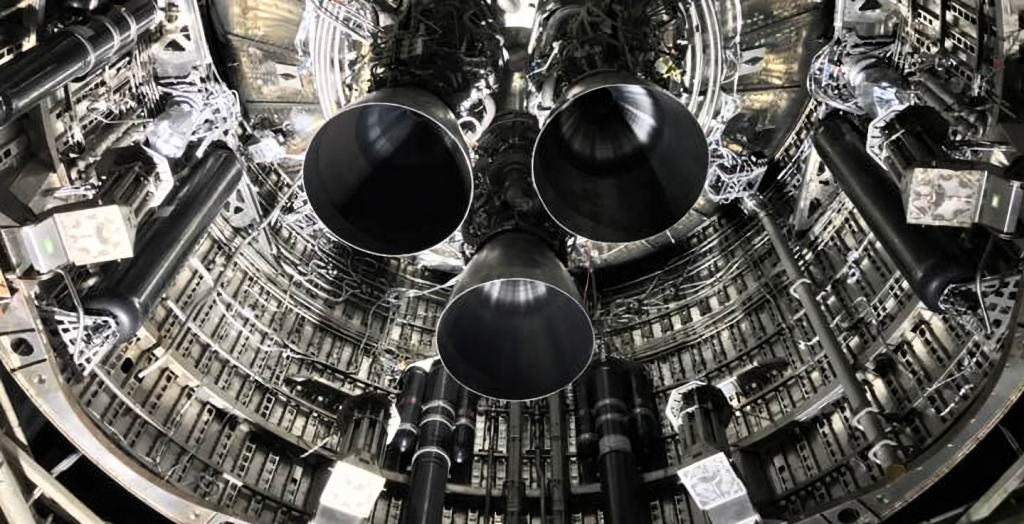
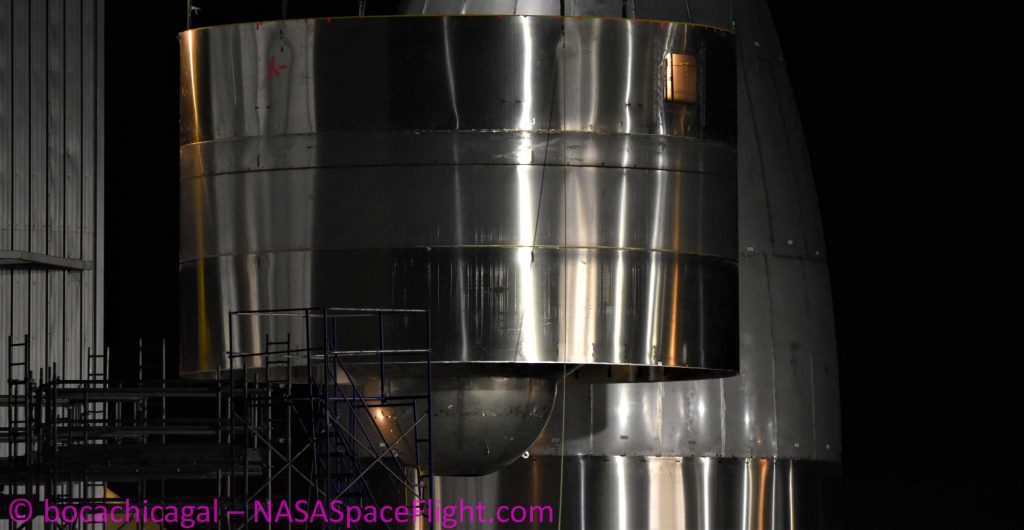
What exactly that handoff refers to is unclear. It could mean that SN8 will switch from main tanks to header tanks during a Raptor static fire test, though it’s unclear why that capability would be necessary unless Starship’s current header tank design is too small. “Handoff” could also refer to the process of switching between main and header tanks between Raptor operations – far more likely. In other words, Starship SN8’s Monday testing might involve two back-to-back static fires, performed with no human intervention. If successful, such a handoff static fire would simultaneously test Starship’s ability switch propellant sources and perform multiple Raptor engine ignitions – both necessary for a launch and landing.
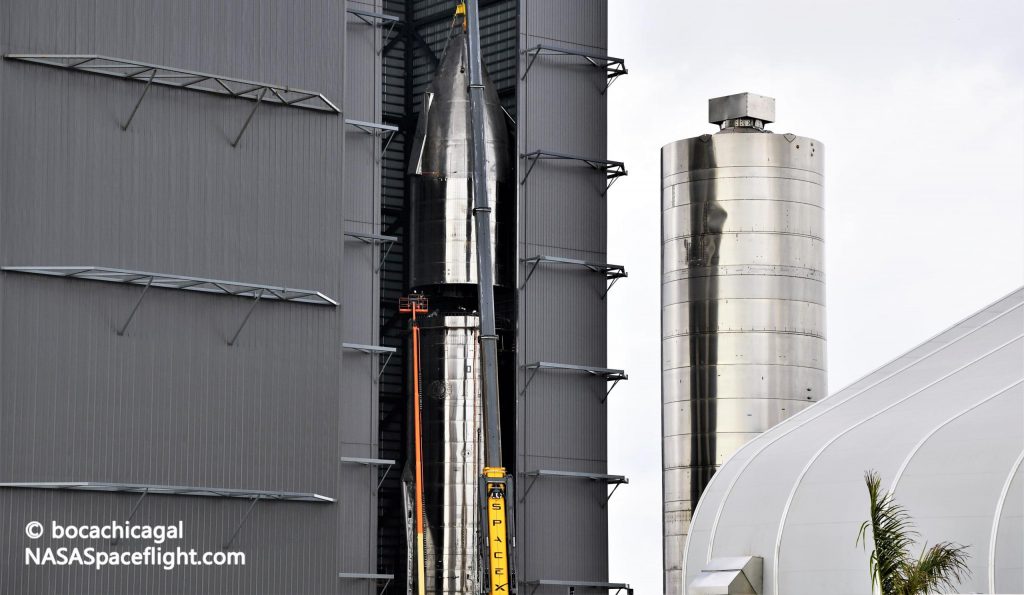
Musk himself believes that Starship SN8 has a ~33% chance of successfully launching, reaching apogee, stably ‘skydiving’ ~14 km (~9 mi) back to Earth, reigniting Raptor engines, and landing in one piece. It’s unclear what will happen in the seemingly unlikely event that SN8 survives, but Starship SN9 is practically nipping at the relatively ancient prototype’s heels.

News
Tesla starts showing how FSD will change lives in Europe
Local officials tested the system on narrow country roads and were impressed by FSD’s smooth, human-like driving, with some calling the service a game-changer for everyday life in areas that are far from urban centers.

Tesla has launched Europe’s first public shuttle service using Full Self-Driving (Supervised) in the rural Eifelkreis Bitburg-Prüm region of Germany, demonstrating how the technology can restore independence and mobility for people who struggle with limited transport options.
Local officials tested the system on narrow country roads and were impressed by FSD’s smooth, human-like driving, with some calling the service a game-changer for everyday life in areas that are far from urban centers.
Officials see real impact on rural residents
Arzfeld Mayor Johannes Kuhl and District Administrator Andreas Kruppert personally tested the Tesla shuttle service. This allowed them to see just how well FSD navigated winding lanes and rural roads confidently. Kruppert said, “Autonomous driving sounds like science fiction to many, but we simply see here that it works totally well in rural regions too.” Kuhl, for his part, also noted that FSD “feels like a very experienced driver.”
The pilot complements the area’s “Citizen Bus” program, which provides on-demand rides for elderly residents who can no longer drive themselves. Tesla Europe shared a video of a demonstration of the service, highlighting how FSD gives people their freedom back, even in places where public transport is not as prevalent.
What the Ministry for Economic Affairs and Transport says
Rhineland-Palatinate’s Minister Daniela Schmitt supported the project, praising the collaboration that made this “first of its kind in Europe” possible. As per the ministry, the rural rollout for the service shows FSD’s potential beyond major cities, and it delivers tangible benefits like grocery runs, doctor visits, and social connections for isolated residents.
“Reliable and flexible mobility is especially vital in rural areas. With the launch of a shuttle service using self-driving vehicles (FSD supervised) by Tesla in the Eifelkreis Bitburg-Prüm, an innovative pilot project is now getting underway that complements local community bus services. It is the first project of its kind in Europe.
“The result is a real gain for rural mobility: greater accessibility, more flexibility and tangible benefits for everyday life. A strong signal for innovation, cooperation and future-oriented mobility beyond urban centers,” the ministry wrote in a LinkedIn post.
News
Tesla China quietly posts Robotaxi-related job listing
Tesla China is currently seeking a Low Voltage Electrical Engineer to work on circuit board design for the company’s autonomous vehicles.

Tesla has posted a new job listing in Shanghai explicitly tied to its Robotaxi program, fueling speculation that the company is preparing to launch its dedicated autonomous ride-hailing service in China.
As noted in the listing, Tesla China is currently seeking a Low Voltage Electrical Engineer to work on circuit board design for the company’s autonomous vehicles.
Robotaxi-specific role
The listing, which was shared on social media platform X by industry watcher @tslaming, suggested that Tesla China is looking to fill the role urgently. The job listing itself specifically mentions that the person hired for the role will be working on the Low Voltage Hardware team, which would design the circuit boards that would serve as the nervous system of the Robotaxi.
Key tasks for the role, as indicated in the job listing, include collaboration with PCB layout, firmware, mechanical, program management, and validation teams, among other responsibilities. The role is based in Shanghai.
China Robotaxi launch
China represents a massive potential market for robotaxis, with its dense urban centers and supportive policies in select cities. Tesla has limited permission to roll out FSD in the country, though despite this, its vehicles have been hailed as among the best in the market when it comes to autonomous features. So far, at least, it appears that China supports Tesla’s FSD and Robotaxi rollout.
This was hinted at in November, when Tesla brought the Cybercab to the 8th China International Import Expo (CIIE) in Shanghai, marking the first time that the autonomous two-seater was brought to the Asia-Pacific region. The vehicle, despite not having a release date in China, received a significant amount of interest among the event’s attendees.
Elon Musk
Elon Musk and Tesla AI Director share insights after empty driver seat Robotaxi rides
The executives’ unoccupied tests hint at the rapid progress of Tesla’s unsupervised Robotaxi efforts.

Tesla CEO Elon Musk and AI Director Ashok Elluswamy celebrated Christmas Eve by sharing personal experiences with Robotaxi vehicles that had no safety monitor or occupant in the driver’s seat. Musk described the system’s “perfect driving” around Austin, while Elluswamy posted video from the back seat, calling it “an amazing experience.”
The executives’ unoccupied tests hint at the rapid progress of Tesla’s unsupervised Robotaxi efforts.
Elon and Ashok’s firsthand Robotaxi insights
Prior to Musk and the Tesla AI Director’s posts, sightings of unmanned Teslas navigating public roads were widely shared on social media. One such vehicle was spotted in Austin, Texas, which Elon Musk acknowleged by stating that “Testing is underway with no occupants in the car.”
Based on his Christmas Eve post, Musk seemed to have tested an unmanned Tesla himself. “A Tesla with no safety monitor in the car and me sitting in the passenger seat took me all around Austin on Sunday with perfect driving,” Musk wrote in his post.
Elluswamy responded with a 2-minute video showing himself in the rear of an unmanned Tesla. The video featured the vehicle’s empty front seats, as well as its smooth handling through real-world traffic. He captioned his video with the words, “It’s an amazing experience!”
Towards Unsupervised operations
During an xAI Hackathon earlier this month, Elon Musk mentioned that Tesla owed be removing Safety Monitors from its Robotaxis in Austin in just three weeks. “Unsupervised is pretty much solved at this point. So there will be Tesla Robotaxis operating in Austin with no one in them. Not even anyone in the passenger seat in about three weeks,” he said. Musk echoed similar estimates at the 2025 Annual Shareholder Meeting and the Q3 2025 earnings call.
Considering the insights that were posted Musk and Elluswamy, it does appear that Tesla is working hard towards operating its Robotaxis with no safety monitors. This is quite impressive considering that the service was launched just earlier this year.








